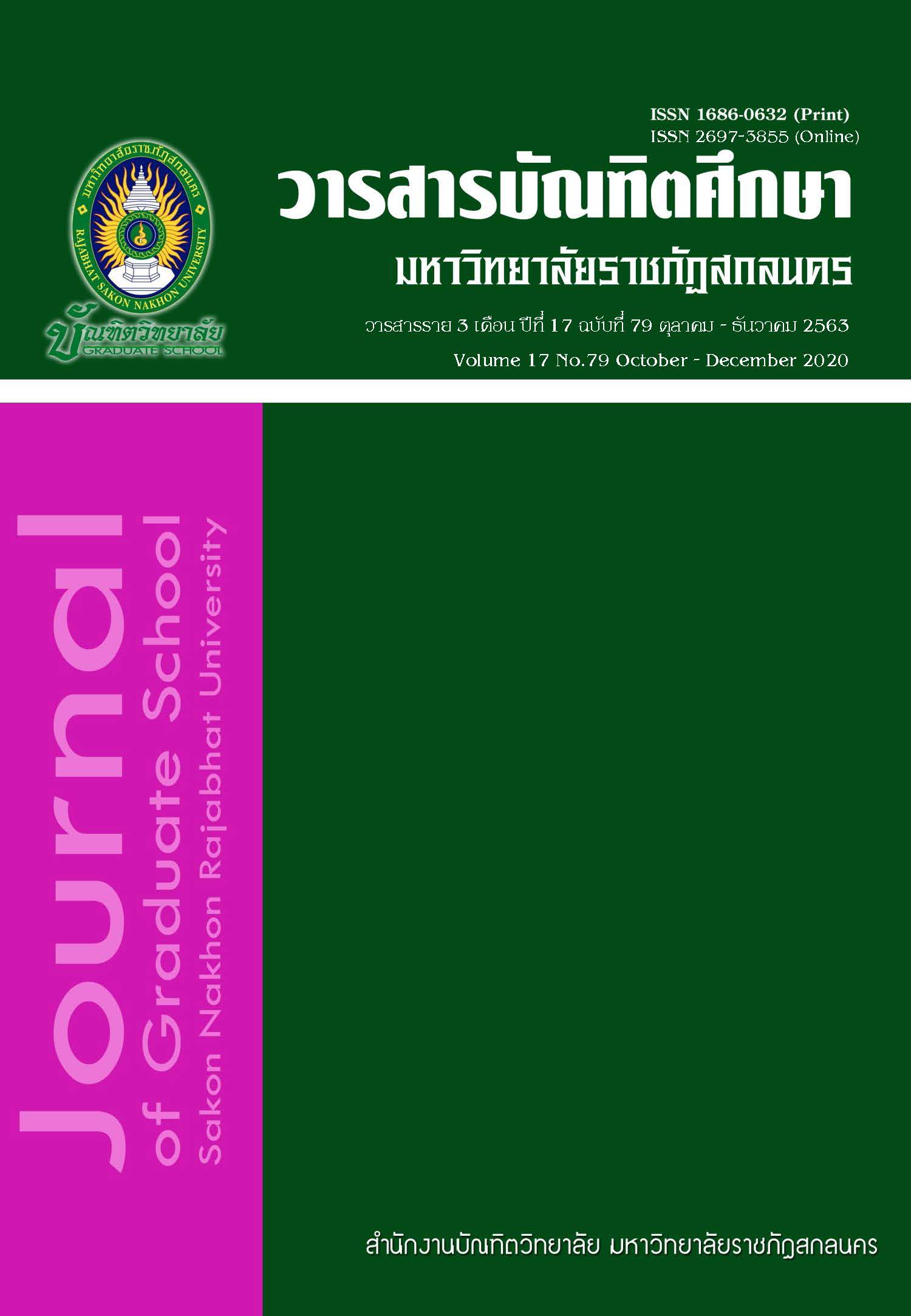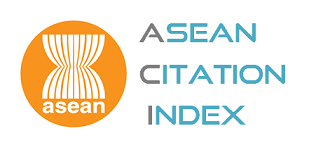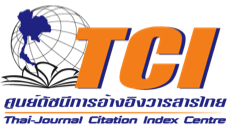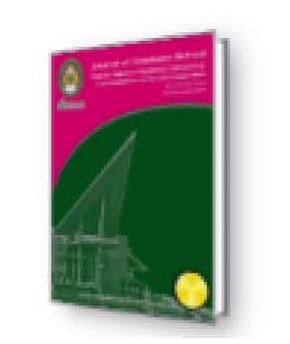กลยุทธ์การจัดการเรียนรู้เพื่อส่งเสริมความฉลาดรู้การอ่าน
Keywords:
Reading Literacy, High 5, FIVES, POSSE, Learning Management StrategiesAbstract
Thailand has taken part in the Program for International Student Assessment (PISA) aiming to test students’ reading literacy every three years; each school must seek learning management guidelines to improve higher levels of student achievement in terms of reading literacy. The author therefore proposed learning management strategies to promote reading literacy by integrating three learning management guidelines: FIVES, High 5 and POSSE strategies, containing different strategy focuses. The proposed strategies contain six steps as follows: 1) exploring content, 2) searching for vocabulary, 3) ranking information, 4) considering the completeness of the content, 5) exchanging information, and 6) comprehensive summary of writing. This guideline could be implemented to develop competency in terms of reading literacy, higher-level thinking and working together of which are knowledge and important skills of learners in the 21st century.
References
กระทรวงวัฒนธรรม. (2560). เอกสารสรุปสาระสำคัญ แผนแม่บทส่งเสริมวัฒนธรรมการอ่านสู่สังคมแห่งการเรียนรู้ของไทย พ.ศ. 2560-2564. กรุงเทพฯ: กระทรวงวัฒนธรรมร่วมกับกระทรวงศึกษาธิการ และกระทรวงมหาดไทย.
กระทรวงศึกษาธิการ. (2552). ตัวชี้วัดและสาระการเรียนรู้แกนกลาง กลุ่มสาระการเรียนรู้ภาษาไทย ตามหลักสูตรแกนกลางการศึกษาขั้นพื้นฐาน พุทธศักราช 2551. กรุงเทพฯ: พริกหวานกราฟิก.
ราชบัณฑิตยสถาน. (2562). พจนานุกรมศัพท์ศึกษาศาสตร์ร่วมสมัย ชุดความฉลาดรู้ (literacy). กรุงเทพฯ: สำนักราชบัณฑิตยสถาน.
สันติวิฒน์ จันทร์ใด และคณะ. (2561). แบบฝึกหัดการรู้เรื่องการอ่าน. กรุงเทพฯ: จุฬาลงกรณ์มหาวิทยาลัย.
สำนักมาตรฐานการศึกษาและพัฒนาการเรียนรู้. (2562). มาตรฐานการศึกษาของชาติ พ.ศ. 2561. กรุงเทพฯ: สำนักงานเลขาธิการสภาการศึกษา.
สำนักเลขาธิการสภาการศึกษา. (2560). แผนการศึกษาแห่งชาติ พ.ศ. 2560-2575. กรุงเทพฯ: พริกหวานกราฟฟิค.
Cooper, J. D; Kiger, N. D and Robinson, M. D. (2018). Literacy: helping students construct meaning. Belmont: Wadsworth, Cengage Learning.
Dymock, S and Nicholson, T. (2010). High 5! strategies to enhance comprehension of expository text. The Reading Teacher, 64(3), 166-178.
OECD. (2000). PISA 2000 Results: Executive Summary. Paris: OECD Publishing
________. (2003). PISA 2002 Results: Executive Summary. Paris: OECD Publishing.
________. (2006). PISA 2005 Results: Executive Summary. Paris: OECD Publishing
________. (2009). PISA 2008 Results: Executive Summary. Paris: OECD Publishing.
________. (2014). PISA 2012 Results: What Students Know and Can Do–Student Performance in Mathematics, Reading and Science (Volume I, Revised edition, February 2014). PISA. OECD Publishing.
________. (2016). PISA 2015 Assessment and Analytical Framework: Science, Reading, Mathematic and Financial Literacy, PISA. Paris: OECD Publishing.
Shea, M and Roberts, N. (2016). The FIVES strategy for reading comprehension. West Palm Beach, FL: Learning Sciences.
Thomson, S; Hillman, K and Bortoli, L. (2013). A teacher’s guide to PISA reading literacy: Victoria. Australian Council for Educational Research Press.
Tiarina, Y and Arianti, G. (2014). Teaching reading analytical exposition text to senior high school students by using POSSE (Predict, Organize, Search, Summarize, Evaluate) Strategy. JELT journal, 3(1), 195-201.
Unesco. (2005). Education for all for life. France: United Nations Educational, Scientific and Cultural Organization.
Warner-Griffin, C., Liu, H., Tadler, C., Herget, D., and Dalton, B. (2017). Reading Achievement of U.S. Fourth - Grade Students in an International Context: First Look at the Progress in International Reading Literacy Study
(PIRLS) 2016 and ePIRLS 2016 (NCES 2018-017). U.S. Department of Education. Washington, DC: National Center for Education Statistics.
Downloads
Published
How to Cite
Issue
Section
License
บทความทุกบทความที่ตีพิมพ์ในวารสารบัณฑิตศึกษา มหาวิทยาลัยราชภัฏสกลนคร ถือว่าเป็นลิขสิทธิ์ของบัณฑิตวิทยาลัย มหาวิทยาลัยราชภัฏสกลนคร










